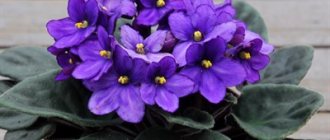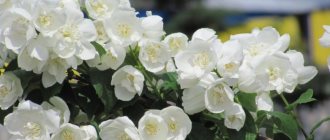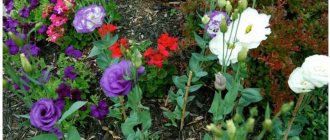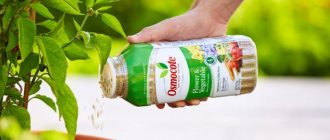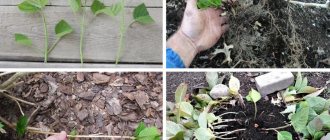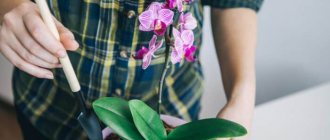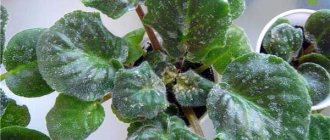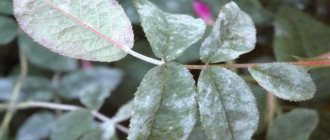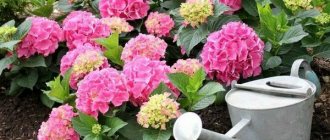Basic principles of caring for jasmine
Jasmine belongs to the category of unpretentious plants that can withstand temperature changes. There are no special requirements for lighting and soil. However, in order for the growth of the shrub to be stable, it is necessary to plant it in an area where there is no draft. You will also need to systematically moisten the soil and apply fertilizers for the jasmine so that the bushes are well-groomed and delight with lush flowering.
Note! Excessive moisture negatively affects the growth and development of the plant, so it is necessary to water the shrub often, but in moderation.
Sanitary and cosmetic pruning of jasmine
In order for the bush to look neat and beautiful and not stand out due to the asymmetry of the shoots, regular cosmetic pruning is required. It is carried out in the spring, during the growing season of the plant. Long branches of the bush are lightly pruned, weak ones are shortened by half. This pruning allows the plant to obtain active growth of young stems.
During pruning, it is important to treat the cut areas with garden varnish. It will protect the plant from fungal diseases.
Young shoots that appear after planting in the first year must be partially removed. Only 2-3 of the strongest sprouts are left. They form the basis of the future spreading shrub. In three years it will become a real decoration of your garden and will delight you with abundant flowering.
Spring feeding of jasmine
Experienced gardeners recommend applying the first fertilizer for garden jasmine on May 10–15. To do this, you need to prepare a nutrient solution, which includes:
- superphosphate - 60 g;
- urea - 30 g;
- potassium sulfate - 30 g.
Pour 20 liters of water into a deep container and add the listed components to it. The prepared solution is used for spraying bushes in May and after the end of the flowering period.
Species, hybrids, varieties
About 70 species of these deciduous shrubs with evergreen leaves or leaves that fall in winter are known.
Common types of mock orange:
- Common (Philadelphus coronarius) – the most popular species, is a garden shrub with intensely fragrant flowers;
- Fluffy (Philadelphus pubescens Loisel);
- Odorless (Philadelphus inodorus);
- Semi-umbrella (Philadelphus cymosus);
- Lewis (Philadelphus lewisii);
- Small-leaved (Philadelphus microphyllus).
Interesting interspecific hybrids:
- Falconera (Philadelphus falconeri);
- Maiden (Philadelphus virginal);
- Lemoine (Philadelphus Lemoine).
Ordinary
Mock orange (Philadelphus coronarius) is a shrub that blooms from May to June with strongly fragrant creamy white flowers. Suitable for single plantings and creating fragrant spring hedges. The plant reaches a height of 3-4 meters. Numerous varieties are characterized by different growth, flowering season and flower color. The view is extremely charming.
Below are popular varieties of common mock orange.
Aureus
Mock orange variety "Aureus" is distinguished by pale yellow leaves in spring, turning yellow in summer. The shrub blooms from May to June, adorning the bush with creamy white, highly fragrant flowers. Growing the variety is not difficult. The plant tolerates polluted city air and periodic droughts well. You can replant the bushes and carry out heavy pruning. Rejuvenating the plant every few years thanks to heavy pruning will help maintain the beautiful shape of the bush and abundant flowering. The "Aureus" variety is sometimes used for formed hedges, lines, group and single plantings.
Photo. Variety Aureus
Bell Etoile
This is a low variety - up to 1.5 m tall with straight shoots and single flowers with jagged edges of the petals.
Variegatus
Variegatus - a variety of mock orange with dark green leaves with a white edge
Grandiflorus (Philadelphus grandiflorus)
Chubushnik grandiflora jasmine is a wide shrub reaching a height of 3 meters. Among the dark green leaves on the arched shoots, large flowers with a diameter of 4-5 cm appear in June.
Photo. Philadelphus grandiflorus
Fluffy (Philadelphus pubescens)
The fluffy mock orange is a very growing species - up to 5 meters in height. The grey-green shoots and undersides of the leaves are covered with hairs. From June to July, the tree is decorated with single, large, odorless, creamy-white flowers. The species is suitable for tall green decorative hedges. Pruning will rejuvenate the plant and give the bush the correct shape.
Photo. Philadelphus pubescens
Attractive hybrids
Falconera (Philadelphus falconeri)
Falconer's mock orange is an interspecific hybrid, distinguished by arched shoots, on which graceful, fragrant, numerous flowers with four petals, collected in clusters, appear from May to June. Grown in gardens and public places.
Photo. Falconer's mock orange
Purple-spotted (Philadelphus × purpureomaculatus)
This is a densely branched shrub, distinguished by the original appearance of its flowers. Pink and purple spots appear at the base of the petals of the crown. Varieties vary in color:
- "Belle Etoile" - the flowers of the variety are wide-bellied, have a pink-violet spot at the base of the petals of the crown;
- "Etoile Rose" - bell-shaped flowers at the root, carmine pink.
Lemoine (Philadelphus × lemoinei Lemoine)
Mock orange Lemoine allows you to decorate your garden space with an attractive low shrub with a wide crown. Semi-double and double flowers appear among the tiny leaves. Popular varieties:
- "Erectus" - jasmine with single, strawberry-scented flowers;
- "Manteau d'Hermine" and "Dame Blanche" - varieties with semi-double flowers;
- "Boule d'Argent" - distinguished by double flowers.
Maiden's (Philadelphus × virginalis Rehder)
Maiden's mock orange is a fast-growing wide shrub reaching a height of 2 meters. Dark green leaves fall off in winter. From June to July the bush is decorated with white fragrant flowers. Flowers are collected in small clusters. The bush grows well in a sunny and slightly shady location, in moderately moist and loamy garden soil. After flowering, cut off old shoots. The plant is used for hedges, single and group plantings. Reproduction occurs from cuttings and root layering.
Photo. Maiden mock orange
Snowbelle
The garden jasmine variety Snowbelle or “Snowstorm” is an upright shrub reaching a height of 2 m. The leaves are dark green, slightly pubescent, and fall off in the winter. The flowers are large, white, double, 5-6 cm in diameter. They appear in large numbers from June to July.
Jasmine 'Snowbelle' prefers loamy garden soils that are moderately moist and have a slightly acidic, neutral or alkaline pH. Grows well in sunny and slightly shady locations. The plant is resistant to low temperatures and pests. The bush is pruned after flowering - in July. The bushes are impressively presented as formed and unformed green hedges, individually and in groups.
Kalina
Mock orange Viburnum is an attractive shrub with stiff stems, 2 meters high. It is distinguished by serrated light green leaves, among which four-petaled snow-white flowers with golden stamens appear in June and July. Magnificent inflorescences consist of several flowers - 5-9 pieces. Numerous flowers have an intense scent. It is best to grow jasmine in sunny or slightly shady areas.
"Kalina" prefers not too wet, loamy, fertile soils, and is resistant to frost and air pollution. Pruning after flowering allows you to rejuvenate the bush and give it the correct shape; the procedure is performed every few years. The plant creates beautifully formed hedges and looks attractive when planted singly or in groups.
What fertilizers are suitable for jasmine
Not every fertilizer is suitable for jasmine. It is recommended to give preference to mineral and organic preparations intended for processing this shrub. Feeding plants with a solution containing calcium promotes abundant flowering. Below you can find the most suitable types of fertilizer for jasmine.
Organic fertilizers
For the harmonious growth and development of the shrub, lush and timely flowering, it is necessary to systematically enrich the soil with useful substances. Beginner flower growers often wonder how to feed jasmine in the summer? The most useful feeding during this period will be wood ash (0.1 kg per bush) or manure diluted in rainwater (1:10).
Mineral fertilizers
Jasmine bushes need mineral supplements. It is recommended to use as a fertilizer a solution containing water and superphosphate (1:5), urea (2.5 g) and potassium sulfate (2.5 g). After thoroughly mixing the components, the solution is poured under the jasmine bushes.
Complex fertilizers
During the budding period, plants need complex fertilizers. Using a similar fertilizer for jasmine promotes the formation of healthy leaf blades. Complex fertilizers for jasmine are applied at intervals. However, it is not recommended to use them more than once every 14 days. Most often, gardeners prefer Agricola, which is diluted in settled rainwater (5 g per 2 liters).
When to collect jasmine
Many people know that jasmine flowers can not only please with their appearance and aroma in spring and summer. Gardeners also collect it to make aromatic oils and tea. This can be done on any day of the flowering period, but you need to know one feature of this plant.
Important! If the flowers are planned to be used in the near future, then any of them will be suitable for collecting. But for long-term storage, it is recommended to pick only the buds.
Jasmine flowers tend to bloom not with sunrise, as is usually the case, but with the onset of night, and therefore it is better to prepare raw materials early in the morning, before sunrise, at the moment of mass opening. It is at this time that all useful substances are collected in jasmine and in large quantities concentration.
Fertilizing jasmine depending on the soil
Despite the fact that jasmine is not a capricious shrub, it is better to plant it on fertile loamy soil. By choosing the right place and providing the plant with proper care, you can grow healthy bushes that delight you with dense foliage and bright flowers. Before planting jasmine, you need to prepare drainage consisting of crushed stone, broken bricks, gravel and sand, which is placed at the bottom of the planting hole.
What to feed jasmine after flowering depends on the type of soil in which the crop grows.
- Sandy soil. It is recommended to feed jasmine with water-soluble nitrogen fertilizers. The solution can be prepared independently at home.
- Loamy soil, easy to cultivate and allowing sufficient heat, moisture, and air to pass through. You can enrich mineral-rich soil by watering the soil with a solution made from water and manure.
- Chernozem is a rich and fertile land, but it also requires the application of fertilizers, which contain potassium, phosphorus, peat and sand.
How to properly care for Chubushnik?
Chubushnik
loves the sun and is afraid of drafts, so it is better to plant it in a well-lit place protected from cold winds. The plant tolerates diffuse partial shade well. But in complete shade it may not even bloom! Mock orange needs light, fertile and loose soil.
Interesting materials:
Very weak internet, what should I do? One earphone plays louder than the other, what should I do? One earphone is quieter than the other, what should I do? One earphone has become quieter than the other, what should I do? They issued a loan without my knowledge, what should I do? What is a restriction on vehicle registration? Leaves are falling from the money tree, what should I do? The leaves are falling off the ficus benjamina, what should I do? Android RAM is full, what should I do? The phone's RAM is full, what should I do?
General rules for applying fertilizers
In order for jasmine to bloom timely and lushly, it is important not only to properly care for the bushes, but also to choose the appropriate fertilizers.
Agronomists have developed general rules for applying fertilizing, according to which the grower must:
- systematically fertilize the soil;
- introduce and alternate different types of fertilizers (organic, mineral and complex);
- select fertilizers, taking into account the type of soil and plant variety;
- take into account the timing and norms of applying a specific solution;
- distribute useful elements evenly over the entire surface;
- Follow manufacturers' recommendations for the dosage of a particular drug.
Diseases and pests
With the slightest mistakes in care, jasmine becomes very vulnerable. It is attacked by diseases and pests.
Diseases manifest themselves in deterioration of the appearance of the bush:
- Jasmine leaves turn black – the plant is cold (move to a warm place);
- Jasmine leaves dry out - lack of moisture or too bright light (water, shade);
- flower buds do not open - there is not enough light (move to a brighter place);
- jasmine leaves turn brown - too hot and dry (spray, place in a tray with wet expanded clay);
- compression, curling, drying and flying of leaves - direct sunlight, lack of moisture, dry air (shade, spray and water the plant);
- leaves dry and stems wither - very bright lighting (shade);
- dropping leaves - little light, insufficient or excessive watering, draft, dry air (move to a lighted place protected from drafts, adjust watering, spray);
- shoots dry out - alkalization of the soil when watering with fresh water (water with acidified water);
- The tips of leaves and young shoots dry out - drying out of the soil, very dry air (water, spray).
When the rules for caring for jasmine are violated, it is attacked by pests: aphids, leaf weevils, whiteflies, spider mites, scale insects, and mealybugs. Before taking up insecticides, use proven folk methods (spray with decoctions of tobacco, calendula and celandine, treat with green soap): jasmine is a delicate plant and may react poorly to strong drugs.
Timing for applying fertilizer for jasmine
Regular application of fertilizers allows you to achieve lush and long-lasting flowering. At the end of spring, manure diluted with water in a ratio of 1:10 should be added to each jasmine bush.
Gardeners are often interested in how to fertilize jasmine in the summer so that it blooms profusely? In June, you need to apply mineral fertilizers to the soil, which contain:
- urea - 30 g;
- potassium sulfate - 30 g;
- superphosphate - 45 g;
- water - 15 ml.
Advice! In summer, jasmine is fertilized in the morning or evening.
As soon as the flowering period is over, it is recommended to add 150 g of wood ash to the tree trunk, this will promote good bud formation for the next year.
What year does jasmine bloom and how long does the flowering period last?
Before you worry about how the plant is doing, you need to know what year after planting jasmine blooms. Depending on the variety, you will have to wait from 2 to 4 years.
Jasmine is easy to care for, but to see the splendor of its inflorescences, you will have to make some effort
Differences in the flowering of garden and indoor jasmine
The difference between jasmine that grows in the garden and one that is in a pot in the house is the timing of the release of buds. The plant stays dormant indoors during the winter. The first buds appear around March-April and last until early autumn.
For most outdoor varieties, the active period begins in June and lasts until the first night frosts.
Additional Information! The winter type of jasmine blooms in January-April. Jasmine sambac with white double petals or polyanthus, when creating comfortable conditions, will delight with beautiful and lush inflorescences throughout the year.
Scheme for spring feeding of jasmine
How to feed jasmine in the spring to create a supply of nutrients? Experts recommend using:
- infusion, for the preparation of which manure is mixed with water (1:10);
- mineral fertilizers, which are applied to the soil at the end of May.
To prepare mineral fertilizer, you need to combine 4 liters of water, 6 g of potassium sulfide, 8 g of superphosphate and 6 g of urea in a deep container. The components are mixed. The prepared solution can be poured over 2 jasmine bushes. It is advisable to apply mineral fertilizing before the start of the active growing season.
Note! During flowering, the crop should be watered abundantly and the soil should be systematically treated with wood ash.
Main views with photos
Some species are the most popular among gardeners and summer residents.
Small-leaved jasmine
This is a fairly compact shrub that almost never reaches more than 100 centimeters in height. This plant has leaf blades that are quite large and curved. Its flowers have a very pleasant smell, reminiscent of strawberries.
Common crown jasmine
The shrub is quite large in size. So, it can reach a height of 250 to 300 centimeters. During the flowering period, such a jasmine bush is decorated with very large and beautiful inflorescences, which emit a pleasant sweetish smell. The leaf blades are painted a rich golden color.
Jasmine fluffy
This plant is recommended to be grown in parks or in fairly large areas. The bush can reach a height of 400 centimeters, and this is the tallest plant of all types of jasmine. However, the peculiarity of this plant is that its lovely flowers have no aroma. This species blooms quite late. Flowering lasts for 4 weeks.
Also very popular is the jasmine variety “Ermine Mantle”. This plant is quite compact and its height does not exceed 100 centimeters. Inflorescences are located along the entire length of the branches. Flowering lasts about 8 weeks.
Mistakes gardeners make when applying fertilizers
Beginner gardeners often make mistakes when feeding jasmine bushes. The most common mistakes include:
- incorrectly calculated dosage. It is important to strictly follow the manufacturer’s recommendations when preparing the solution;
- violation of feeding deadlines. Above we indicated the preferred timing for applying fertilizers;
- use of drugs after the expiration date. The elements that make up fertilizers lose their beneficial properties over time, so feeding jasmine with expired fertilizer will be pointless;
- uneven distribution of the drug over the area. It is important to fertilize correctly to avoid a deficiency or excess of substances in a particular area of the soil.
Jasmine is an amazing shrub that delights with abundant and long-lasting flowering. This plant can become the highlight of a garden plot. But so that the crop does not lose its attractive appearance, it is worth feeding the bush correctly and developing your own schedule for fertilizing mock orange.
Useful properties of jasmine
Only multi-flowered (medicinal) jasmine with simple white flowers is endowed with healing properties. Every part of the plant contains useful substances. Based on them, drugs are produced to strengthen the nervous system, normalize blood pressure, and treat the liver. Jasmine in the form of infusions, decoctions, and tea has analgesic, antiallergic, sedative and antiseptic effects. Restores hormonal balance in the body.
Green tea with jasmine relieves nervous tension, increases performance, and improves mood. Jasmine leaves are used to reduce body temperature. A decoction of flowers increases lactation, and a decoction of leaves stops it. Hot compresses are used for skin ulcers.
Jasmine essential oil, used in perfumery, is very expensive all over the world, because about 7 million flowers are consumed to produce 1 liter of oil. The smell of jasmine improves mental activity, invigorates and creates an atmosphere of harmony. Inhalations with oil are carried out for laryngitis.
How to rejuvenate a jasmine bush?
Radical anti-aging pruning of plants no younger than 12 years of age is carried out in early spring once every 6-7 years. To rejuvenate the jasmine bush, remove all branches older than 10 years. They are cut at ground level. All dry and thin, poorly developed shoots are also removed.
Interesting materials:
Why is it so important to smile? Why are hugs so important? Why did Tahmasp extradite Bayezid? Why targeted advertising? Why is the text divided into paragraphs? Why does my phone only charge when it's turned off? Why is Telegram better than WhatsApp? Why is Telegram banned in Russia? Why doesn't my Philips TV see digital channels? Why can't a body move faster than the speed of light?
Why doesn't jasmine bloom?
Jasmine, which once came from eastern countries, today feels comfortable in our latitudes and delights with long flowering, from 50 days or more. Delicate white, less often with pink splashes, flowers bloom immediately after lilac and hawthorn and almost completely cover the bush, exuding a pleasant, incomparable aroma.
Garden jasmine is a capricious plant and requires careful attention and rational care.
If this does not happen and the adult plant does not please you with a lush foam cap of delicate petals, then there may be several reasons:
- Incorrect landing.
- Violation of pruning rules.
- Overfeeding with fertilizers.
- Inappropriate watering or plant disease.
Did you know? Craftsmen from Saudi Arabia managed to create the longest jasmine necklace in 4 days. Its length was 111 m and its weight was about 120 kg.
Untimely pruning
This plant is quite unpretentious in care and can grow without intervention, however, its decorative functions are lost. Old branches prevent the development of new ones, and damaged and frozen ones become a breeding ground for pests and diseases. Flowering will be insignificant due to the small number of buds on new shoots.
In addition, the bush spends nutrients and energy on old trunks. That is why it is important to carry out sanitary and formative pruning in a timely manner, adhere to the basic rules when carrying out them, and also monitor the shape of the jasmine, since it is precisely because of its shape that it is an excellent decoration for the garden.
Important! If you neglect to trim jasmine, the branches of the plant can reach about 2 m and randomly stick out in different directions.
Diseases
Jasmine is susceptible to both fungal and viral diseases. They can be identified by examining the leaf plates, shoots and root collar. If there are reddish spots, damage to the integrity of the cover, curling of the leaves and drying out of the green part of the shoots, then treatment with fungicides, insecticides or antifungal drugs is necessary.
Terry
Whether it is worth giving preference to varieties with a special, double flower structure is a matter of taste. But you need to keep in mind that such an original structure prevents the formation of a full-fledged inflorescence, and the flowers themselves become small. The bush loses its originality, its uniform flower cover and even the leaves change their shape, become crushed and thin out.
You might be interested in learning how to propagate jasmine.
Trimming Features
In order for the jasmine bush to be lush and fragrant, fertilizing alone is not enough; it also needs to be properly cared for.
In order for the crown to always look well-groomed and impressive, regular formative pruning should be carried out. Both summer residents and gardeners have several secrets and rules regarding this procedure:
- formative pruning must be carried out in spring, when the shrub is in a vegetative state;
- the longest branches need to be cut off completely, and short ones should be shortened by ½ part;
- for more abundant flowering, rejuvenating pruning is carried out, or rather, all empty branches are removed;
- in an adult bush, the central trunk needs to be cut to 45–50 centimeters, while the rest are removed entirely.
Every year it is necessary to inspect the bush and remove damaged and diseased branches.
Reproduction of mock orange
Mock orange can be propagated by seeds, dividing the bush, layering or cuttings.
Pre-soaked seeds must be sown under film or in a greenhouse, since sprouted seedlings are very small in size. Already in the second half of summer they can be moved to a garden bed, where the seedlings will grow to a height of about 20 centimeters by autumn. New plants already in the second or third year of growth can be moved to a permanent place of residence in a prepared bed before the onset of severe frosts. For the winter, cover the street bed with spruce branches, and in the spring, young shoots will appear faster from the seeds, nourished by the moisture of melting snow. And although seedlings grown from seeds are considered more hardened, this method is not popular, since it takes a long time for the seedling to bloom - almost 7-8 years.
The method of dividing a bush is mainly used only by amateur gardeners when replanting plants and its implementation is identical to the division of other flowering shrubs.
The most popular methods of propagating varietal seedlings include propagation by layering and cuttings.
The most common is vegetative propagation, since mock orange can be taken from cuttings quite simply. To do this, in the fall, from annual, medium-thick shoots, you need to prepare cuttings about 15-20 centimeters long, making one cut from below near the node and a second from above - above the upper pair of buds. For the winter, the cuttings can be placed in the basement in damp sand or buried in a quiet place in the ground. With the arrival of spring, after the snow has completely melted, the cuttings must be planted in a mixture of sand and peat. Shoots in the form of short branches bearing flowers, in the initial stage of lignification, are suitable for use as summer cuttings. The cuttings must have at least one internode, about 5 centimeters long, without a pre-cut upper part of the shoot with flowers and no less than two pairs of leaves, which in order to reduce the area of evaporation must be further reduced by half. After this, summer cuttings must be planted in a mixture of sand and peat to a depth of 1 centimeter, protected from direct sunlight. It is advisable to cover the place with glass and spray the cuttings every day; after about 2 - 4 weeks they will take root and can be transplanted into open ground, not forgetting to water and loosen the soil around them. Reproduction by layering is carried out in early spring. To do this, you need to select the strongest woody branch, bend it to the ground, place it in a pre-prepared recess, secure it in several places with wire and cover it with earth and peat. After a month and a half, new shoots will appear, which need to be hilled several times and the weeds removed. In autumn, young bushes can be separated and planted in a place of permanent growth.
Beautifully flowering mock orange shrubs are quite popular due to the variety of forms; plant heights, including dwarf varieties - up to 50-60 centimeters tall; elegant leaves not only of bright colors, but also framed by stripes or borders of a different color and deliciously fragrant flowers. And this is not the limit of dreams, from continuous selection work, more and more new species of this extraordinary plant continue to appear, and I want to believe that among them, you will definitely be able to choose the one that will become a worthy and favorite decoration for your site.
Useful article? Share with your friends:
Selecting the optimal soil and planting
Garden jasmine, as mentioned above, is a fairly unpretentious plant. But for its best growth, you should pay more attention to the choice of soil, as well as to its immediate planting.
- Due to its unpretentiousness, such a shrub is able to take root and grow well in almost any soil. However, whenever possible, preference should be given to soil rich in nutrients. It should be remembered that jasmine roots react extremely negatively to excessive humidity, so the choice should be left on a piece of land located at a not very high elevation.
- Sand mixed with small stones should be poured into the hole prepared for planting. This layer will act as drainage. When planting a plant in spring, it is recommended to pour nitrophosphate in the amount of 50 grams into the hole. This will allow the plant to quickly take root in its new location.
- When the bush is planted, the soil will need to be compacted a little. Then the jasmine needs to be watered.
- In order for the plant to develop correctly, it is necessary to systematically add fertilizer to the soil.
